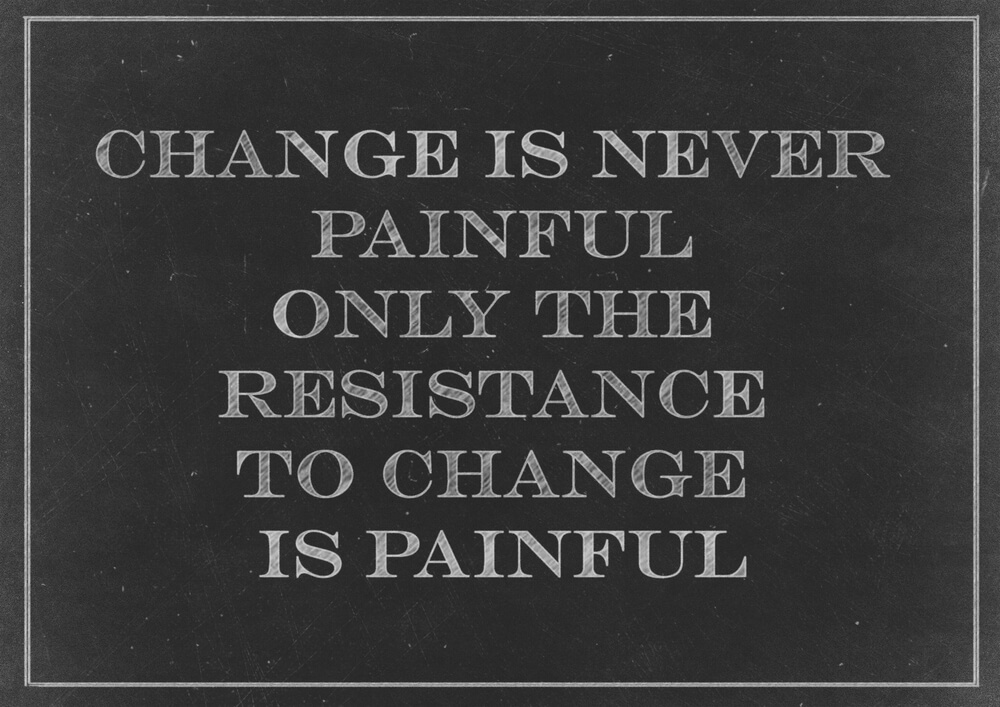
Do you ever find yourself resisting change? Whether it’s a new job, a new relationship, or a new routine, change can be difficult to embrace. But have you ever wondered why we resist change in the first place?
One reason we resist change is because it can be uncomfortable. Change often means stepping outside of our comfort zones and facing the unknown. Our brains are wired to seek safety and predictability, so when faced with change, we may feel anxious or uncertain.
Another reason we resist change is because of our egos. We may feel attached to our current identity or way of doing things, and change can threaten that sense of self. We may also fear failure or the unknown, which can hold us back from taking risks and trying new things.
Understanding Change
Definition of Change
Change is an inevitable part of life. It refers to any alteration or modification in the way things are done or how they are perceived. Change can be a result of various factors such as technological advancements, social changes, economic shifts, or political reforms. It can be positive or negative, intentional or unintentional, sudden or gradual.
Types of Change
There are different types of changes that occur in our lives. Understanding these types can help you prepare for and adapt to change more effectively.
Developmental Change
Developmental change is a natural and gradual process that occurs over time. It is a type of change that happens as a result of growth and maturation. Examples of developmental change include physical, emotional, and intellectual changes that occur as we age.
Transitional Change
Transitional change is a type of change that occurs when you move from one phase of life to another. It can be a result of a significant life event such as getting married, having a child, changing jobs, or moving to a new city. Transitional change can be challenging, but it can also be an opportunity for growth and personal development.
Transformational Change
Transformational change is a significant and radical change that alters the way things are done. It can be a result of external factors such as technological advancements or internal factors such as a change in organizational culture. Transformational change can be difficult to navigate, but it can also lead to new opportunities and growth.
Remedial Change
Remedial change is a type of change that occurs when something has gone wrong, and you need to fix it. It can be a result of a mistake, an error in judgment, or a failure to meet expectations. Remedial change can be challenging, but it can also be an opportunity to learn from your mistakes and improve your performance.
In conclusion, change is an inevitable part of life. Understanding the different types of change can help you prepare for and adapt to change more effectively. Whether it’s developmental, transitional, transformational, or remedial change, it’s essential to embrace change and see it as an opportunity for personal growth and development.
The Psychology Behind Resisting Change
Change is an inevitable part of life, but many of us resist it. Understanding the psychology behind our resistance to change can help us overcome it. Here are some common reasons why we resist change:
Fear of the Unknown
One of the main reasons why we resist change is fear of the unknown. When we’re faced with a new situation, we don’t know what to expect, and this can be scary. We worry about what might happen, and we may even imagine worst-case scenarios. This fear can prevent us from taking the necessary steps to make changes in our lives.
Loss of Control
Another reason why we resist change is the loss of control. When we’re used to doing things a certain way, we feel like we have control over our lives. But when something changes, we may feel like we’re losing control. This can be unsettling and make us resistant to change.
Breaking from Routine
Humans are creatures of habit, and we like routines. We find comfort in knowing what to expect and when to expect it. When something disrupts our routine, we may feel disoriented and uncomfortable. This can make us resistant to change, even if the change is ultimately for the better.
In summary, our resistance to change is often rooted in fear of the unknown, loss of control, and breaking from routine. Recognizing these reasons can help us overcome our resistance and embrace change.
Biological Factors
Resistance to change is a natural human reaction that is hardwired into our biology. Despite the benefits that change can bring, our brains are programmed to seek out safety and predictability. In this section, we will explore the biological factors that contribute to our resistance to change.
Brain’s Reaction to Change
When faced with change, the brain’s first response is to trigger the amygdala, the part of the brain responsible for our fight or flight response. This triggers a release of stress hormones, such as cortisol and adrenaline, which prepare our bodies to respond to a perceived threat.
This response is useful in situations where we need to react quickly to danger, but it can also make us resistant to change. When we perceive a change as a threat, our brains will resist it in order to maintain the status quo and avoid potential danger.
Comfort Zone
Another biological factor that contributes to our resistance to change is our comfort zone. Our comfort zone is the set of behaviors, thoughts, and actions that we are familiar and comfortable with. When we are forced to step outside of our comfort zone, we experience discomfort and anxiety.
This discomfort is caused by a release of dopamine, the neurotransmitter responsible for pleasure and reward. When we engage in familiar behaviors, our brains release dopamine, which reinforces those behaviors and makes us feel good. When we are forced to try something new, our brains do not release as much dopamine, which can make us feel uncomfortable and resistant to change.
In conclusion, our resistance to change is a natural biological response that is designed to keep us safe and comfortable. Understanding these biological factors can help us to recognize our resistance to change and take steps to overcome it.
Social and Environmental Factors
When it comes to resisting change, social and environmental factors can play a significant role. Peer influence and cultural norms are two sub-factors that can contribute to this resistance.
Peer Influence
Your peers can have a powerful influence on your behavior. If your friends or colleagues are resistant to change, it can be challenging to go against the group and embrace something new. You may feel pressure to conform to the group’s behavior, even if you don’t necessarily agree with it.
On the other hand, if your peers are supportive of change, it can be easier to embrace it. You may feel more confident in your decision to try something new when you have the support of those around you.
Cultural Norms
Cultural norms can also play a role in how resistant people are to change. If a particular culture values tradition and stability, it may be more challenging to introduce new ideas or ways of doing things. People may be hesitant to embrace change because it goes against the cultural norms they have grown up with.
On the other hand, if a culture values innovation and progress, people may be more willing to try new things. They may see change as an opportunity to improve and grow, rather than a threat to their way of life.
It’s important to recognize the influence that social and environmental factors can have on our behavior. By understanding these factors, we can work to overcome resistance to change and embrace new ideas and ways of doing things.


